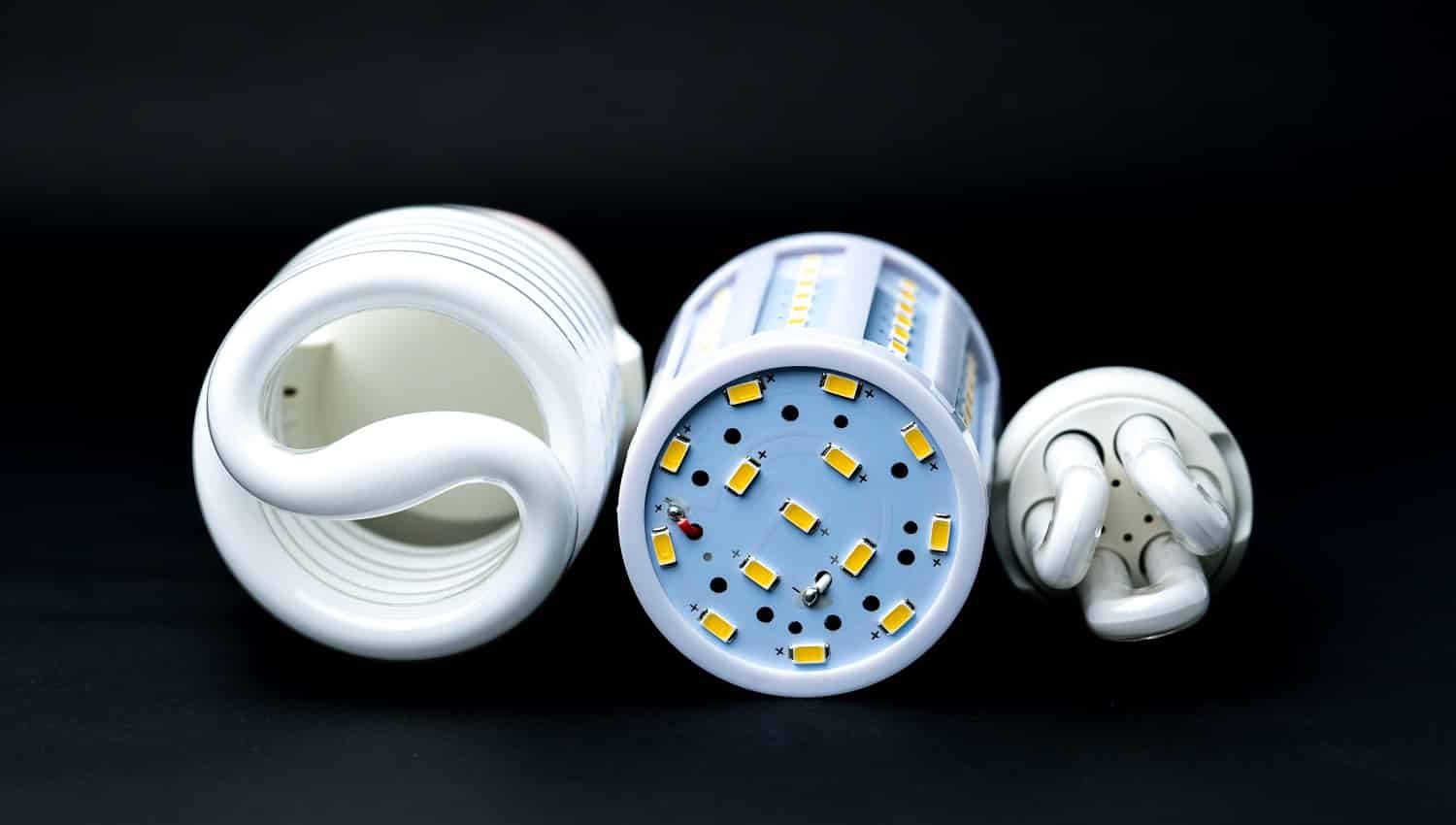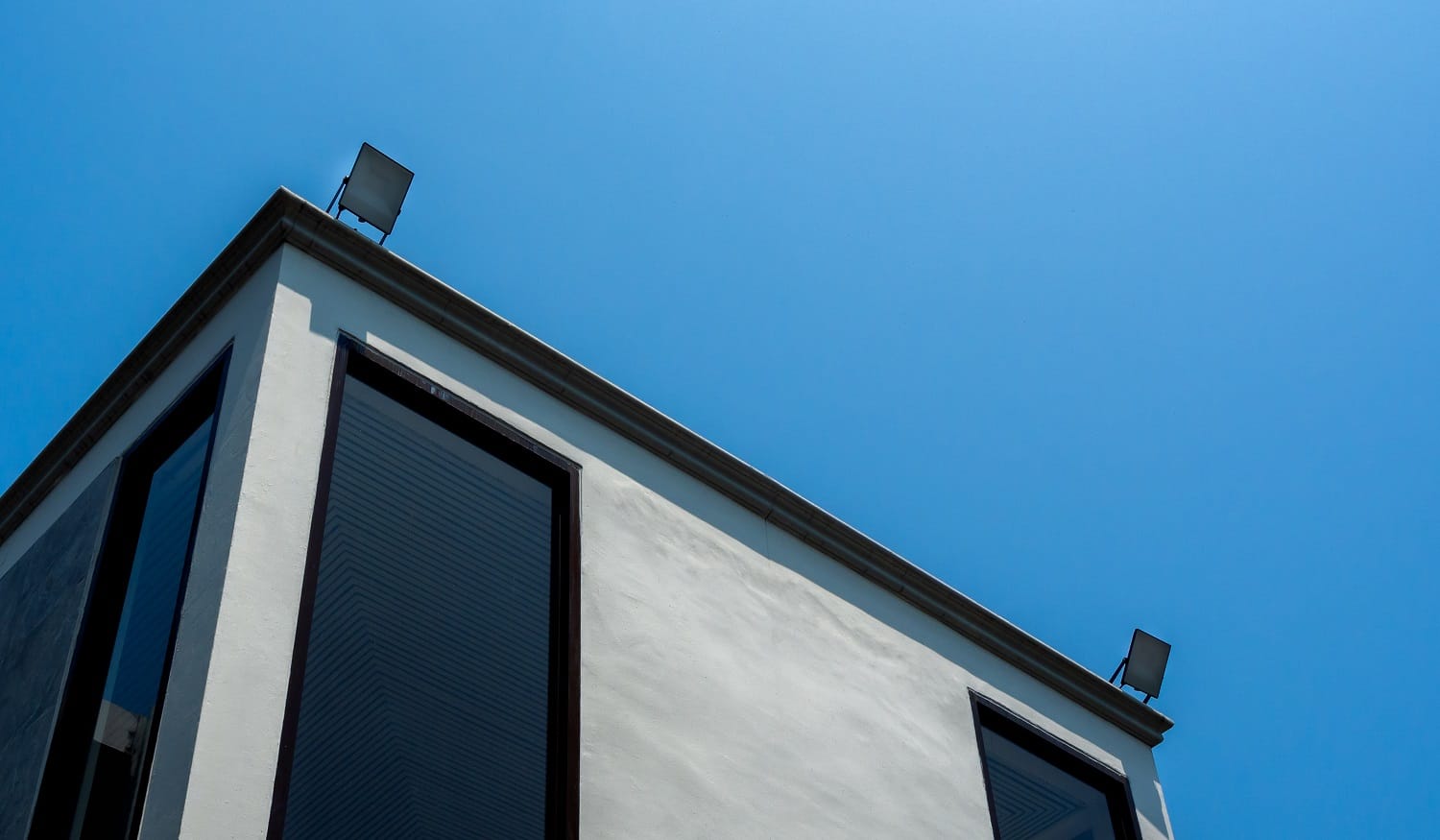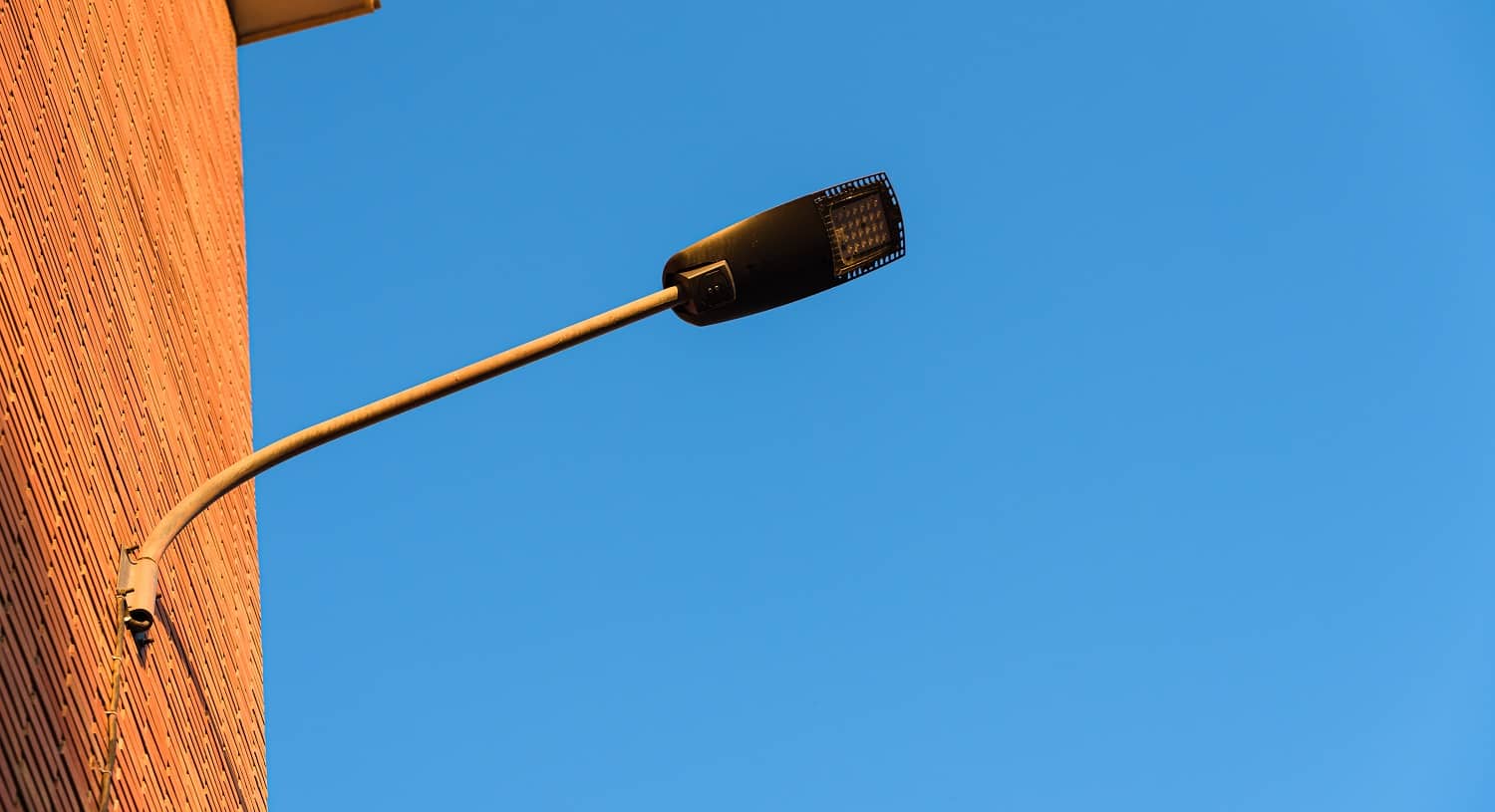Floodlights are hardly the latest invention in the electricals industry, and yet they have only become more relevant over time.

These extensive lighting systems are commonly found in football grounds, amphitheaters, and other outdoor locations. But it's no longer limited to commercial use only. With more homeowners opting for higher security, floodlights are also used for backyard or fence lighting.
Furthermore, these high-intensity lights have also ventured indoors and are often used to create uniformly lit space. Nevertheless, when it comes to the different types of floodlight bulbs, you have quite a few options to choose from. So, if you want to learn a little more about your choices, you have arrived at the right place.
Without further ado, let's begin.
Different Types Of Floodlight Bulbs

-
LED

The LED light is one of the most path-breaking inventions of the 20th century and, as such, has gained huge momentum in the electronics industry. These lights are suitable for both indoor and outdoor use, providing users with a range of advantages. The following are some of the best qualities of LED bulbs.
Advantages Of LED Bulbs
-
-
Longer Lifespan
-
Hands down, LED bulbs have a longer service life compared to most options on the market. To explain further, a single diode can run for up to 50,000 hours, consistently producing the same amount of light.
Besides, an extended lifespan translates into money-saving in the long run. Therefore, if you want a reliable floodlight, especially for security reasons, LED will not disappoint. Also, you'll end up saving a lot on replacement expenditure.
-
-
Energy Efficiency
-
When it comes to LED lights, energy efficiency and a longer lifespan are two sides of the same coin. Long story short, the reduced energy consumption of these bulbs makes them more viable as floodlights.
Moreover, you can numerically determine a bulb's efficiency by calculating the ratio of lumens to watts. In short, LED units can have the same light output as other bulbs; however, they can do so with much lower power consumption.
-
-
Reduced Emissions
-
Back in the day, bulbs would tend to heat up and, more often than not, burn out. But we longer belong to such 'dark' ages, especially with the advent of bright, low-emission LED lights.
This is a major consideration that you cannot overlook while buying floodlights. When LED lights are turned on, they emanate very little heat, indicating zero waste of energy. They are the 'cooler' lighting options, which immediately puts them miles ahead of traditional bulbs.
-
-
Eco-Friendly Lights
-
As environmentally-conscious individuals, each of us should do our bit to reduce carbon footprint. Therefore, when you choose LED over other options, you're taking a significant step towards sustainable living.
For starters, they do not contain toxic substances like mercury, which is otherwise present in CFL bulbs. Also, the lights can be recycled when out of use. So, if you aim to live a greener life, LED is undoubtedly the right choice.
-
-
Goes Off With A Warning
-
Unlike other light bulbs, LEDs go off with a warning. If you notice carefully, the lights get a little dimmer towards the end of their service life. This indicates that they have run their course and it's time you arranged for a replacement.
Now, that's much better than being caught off-guard, especially if you don't want your floodlights to go off in the middle of the night. On the contrary, other bulb varieties just instantly fizzle out.
Other Perks Of Having LED Lights
Besides these primary advantages, LED lights also offer several other perks as floodlight fixtures.
- The lights are dimmable
- They turn on instantly and do not need to warm-up
- There are plenty of color options to choose from
- They are much smaller than other light bulb varieties
- These lights are far more durable and less prone to breaking
Disadvantages Of LED Lights
That said, LED lights also come with their own set of shortcomings. If you're considering them for floodlights, it's best to know both sides of the story so you can make an informed choice.
-
-
High Upfront Cost
-
LED lights often get a bad rap for their high upfront cost. While these bulbs are cost-effective in the long run, the initial investment could leave you digging deep into your pocket. They are easily among the most expensive options on the market, so the hefty price tag can be a deal-breaker for some buyers.
Besides, you'd need multiple LEDs with a higher output for a floodlight. So, you might as well calculate the total cost before getting on board.
-
-
Heat Sinking System
-
As we already said, if you want a large, high-capacity floodlight, you'll need several LEDs to produce the desired illumination. And hence, even though LED lights are low on emission, using multiple bulbs on one fixture leads to a higher heat generation. Therefore, your floodlight set up should have a built-in heat sinking system to curb emissions.
-
Halogen

Halogen bulbs are the next best choice for floodlights after LEDs, and as such many still prefer them for their reasonable price. While halogen is a more traditional option, they have lost the race to LED when it comes to energy efficiency. However, let's leave the comparison for sometime later and learn a little more about halogen lights.
Halogens are commonly used for outdoor lighting fixtures primarily for their higher illumination capacity. So, if you are considering this option, here are some of the advantages.
Advantages Of Halogens
-
-
Low Cost
-
Halogen bulbs are dirt cheap compared to LED lights. To give you a clear picture, an LED diode can cost 10 times higher than a halogen bulb, while a CFL may be listed at double. Therefore, price-wise, you have a lot to gain when opting for these lights.
-
-
High CRI
-
Bulbs are rated according to CRI (color rendering index). This is a technical term wherein a higher CRI value indicates increased brightness and illumination. Halogen bulbs have a higher CRI and thus can produce a significant amount of bright light. Now that's excellent news for users looking for floodlight options.
-
-
Small-Sized Bulb
-
Another plus point that puts halogen ahead of most competitors is the small size of the bulb. Despite its small size, it's really powerful, and that's what most users want. On the contrary, large-sized lights look very imposing and do not go well with a modern setup.
-
-
Turns On Instantly
-
A halogen light turns on instantly, optimizing the light output in seconds. Whereas a CFL bulb takes some time to reach full brightness.
Other Perks Of Using Halogen
That's not all; halogens also provide the following advantages.
- The bulbs are dimmable
- The lights do not contain mercury, and hence are safer for the environment
- They work well with motion-activated lights
Disadvantages Of Halogen Lights
Just like LEDs, halogen lights also have their cons. So, read up before deciding on something.
-
-
Low Energy Efficiency
-
Halogen lights lack energy efficiency as opposed to other bulb varieties. This is primarily due to their massive heat output, which essentially indicates higher and wasteful power consumption. In fact, you should avoid changing a bulb with bare hands when it's really hot and fuming.
-
-
Oils Can Destroy The Bulb
-
Halogen bulbs are vulnerable to oils, and hence you should never touch them with bare hands. Our skin contains natural oils which can transfer to the bulb upon direct contact. More often than not, it can permanently damage the light.
-
-
Harsh On The Eyes
-
Halogen lights are supreme when it comes to brightness levels, and even though that's a good thing, they can be really harsh on the eyes. Therefore, it's best to avoid looking directly into the light as it can leave you disoriented or briefly impair vision.
-
CFL

CFL (compact fluorescent light) bulbs are not as popular as LED or halogen lights when it comes to outdoor fixtures. However, this does not come as a surprise since CFL has its own downsides, which outweigh the advantages. Regardless, here are some reasons why they can be considered as a floodlight option.
Advantages Of CFL
-
-
Affordable Price
-
CFLs are priced at a much affordable rate, especially if you want to compare the cost with LEDs. Therefore, many homeowners prefer this option to keep their expenses low.
-
-
Reduced Energy Consumption
-
Now, we're not saying that CFL bulbs are as energy-efficient as LED lights, but they do a much better job than incandescent bulbs. Basically, CFLs run on 75% less energy than incandescent bulbs, and that's a good number for many users.
-
-
Long Lasting Bulbs
-
Again, this is not with respect to LEDs, but CFL lights have a relatively extensive service life. A standard CFL bulb can last for up to 15,000 hours, which is significant compared to other bulb options. While that's not even remotely close to 50,000 hours, given the price tag, it sure sounds like a good deal.
Disadvantages Of CFL Lights
Despite the advantages, CFL bulbs are not suitable for outdoor floodlights. Therefore, it's best to be aware of the drawbacks, so you can make a well-informed choice.
-
-
Contains mercury
-
By now, you already know that CFL lights contain mercury and hence are labeled toxic. Needless to say, mercury is hazardous for you as well as the environment. Therefore, the manufacturing of CFL bulbs itself is a harmful procedure.
Moreover, due to their toxic nature, these bulbs are not suitable for recycling. While it's more or less safe to handle these bulbs, make sure that the spiral tube remains intact to avoid releasing mercury.
-
-
Takes Time To Turn On
-
CFL bulbs take their own sweet time to turn on, which is a major drawback for a floodlight. Simply put, they take almost 3 minutes to optimize the brightness level. While this may not be a problem for indoor fixtures, it's not acceptable in an outdoor setup.
Many homeowners equip their floodlights with motion sensors to beef up security. That said, CFL lights could end up comprising your safety by wasting precious seconds.
-
-
Susceptible To Temperature Changes
-
CFL lights are largely affected by temperature, meaning a nip in the air could leave the lights dimmer. Therefore, they're not as effective in the winters as the drastic drop in temperature impacts the brightness level. Also, turning them on and off regularly can significantly shorten their service life.
-
HID
HID (High-Intensity Discharge) lights are another option you might want to look into.
Advantages Of HID
These lights have a longer service life (last 3 times longer than halogen lights) and are more energy-efficient than incandescent and CFL bulbs. This also makes them much more cost effective.
Disadvantages Of HID
Most lights generate UV radiation and hence require UV-blocking filters to avoid damaging fixture parts. Moreover, exposure to broken HID lights can induce health hazards in humans and animals. Lastly, HID lamps contain mercury, which is toxic to the environment.
Different Types Of HID Lights
HID lights are manufactured using different chemicals, and thus you can choose among the following options.
-
- Mercury vapor lamps
- Metal halide lamps (ceramic MH)
- Xenon short-arc lamps
- Sodium vapor lamps
LED vs. Halogen vs. CFL
LEDs lead the race when it comes to floodlight systems, primarily for their energy efficiency and durability. Besides, they're not as fragile compared to other bulb varieties and can function consistently in all weather conditions.
On the flip side, they're more expensive, and that's where halogens and CFLs come into the picture. Now, halogens have been a floodlight option for the longest time, and they cost a lot less than LED bulbs.
However, they tend to heat up and consume more electricity to provide the same amount of brightness as LED systems. Your power bill could shoot through the roof, and that's not something you'd want in the long run.
As for CFL bulbs, they are the least functional as floodlights and can end up doing more harm than good. Basically, they don't win a lot of points for efficiency, and to top it all, they contain harmful substances like mercury.
Buying Considerations For Floodlights
If you have never bought a floodlight before, the different options available on the market might leave you all confused and overwhelmed. Besides, it's not as simple as buying a bulb since several factors come into play.
Therefore, before you go ahead and browse through your options, it's best to be sure about what you're looking for, both in terms of performance and features. For starters, you should be clear about why you need a floodlight in the first place.
After that, you can move on to the other considerations listed below.
-
Location
Floodlights are meant for uniform illumination across a large area, and as such, the location is of prime importance. While it's typically used for outdoor lighting, it's not entirely uncommon to find one in an indoor site.
Determine the preferred area or object you want to cast your light on and make sure to position the fixture at an optimum angle. At the same time, it should be mounted in a way, so that the light is comfortable on the eye and does not disturb others in the vicinity.
The best way to do so is by installing the light unit at a downward angle of around 22°. Also, depending on the bulb type, some floodlight systems can heat up rather quickly, and so it's advisable to set it up at least 9 ft off the ground. This way, you can keep the heat from reaching someone directly underneath the light.
-
Type Of Bulb
Now, this is what our entire discussion is centered upon. The type of bulb you choose for your floodlight will significantly impact its performance and longevity. We have already talked about the different options available and what you can expect from each of them.
-
Dusk-To-Dawn Lights
Floodlights are reliable security solutions that can keep your home exterior well lit while discouraging intruders. Therefore, it makes complete sense to get one system installed instead of buying separate units to cover the entire property.
That said, if beefing up security is your primary objective, you might want to invest in something with a dusk-to-dawn feature. These smart lights automatically turn on at dusk and turn off in the morning. Honestly, it's really convenient and ultimately time-saving.
-
Motion Sensors
If you want to avoid keeping your floodlight light on for an extended period, we suggest equipping it with motion sensors. This way, the light turns on only when someone is moving towards your house. Also, to increase security, you can get sensors with a longer and wider range.
Where Are Floodlights Used?
Floodlights are quite versatile in their application and used for both indoor and outdoor illumination. However, the majority of these lighting systems are designed for exterior use, where small light bulbs fail to produce the required brightness level.
On that note, floodlights are meant for home as well as commercial purposes. Therefore, these systems not only provide backyard security but also much-needed lighting in outdoor events. In the case of the latter, these fixtures are used as key lighting sources in concerts, playgrounds, pool facilities, etc.
In fact, the massive lights found in football grounds or stadiums are highly resilient, as they can hold up to external elements like wind or rain. Besides, you wouldn't be able to enjoy the evening broadcast if these lights failed to work.
As for indoor use, floodlights are used in sports arenas, offices, conference rooms, studios, indoor pools, etc. However, these systems are not as extensive or as powerful as their outdoor counterparts. The brightness level is much more subdued, and they consume less power than the exterior ones.

Final Words
With this, we hope we could shed enough light on the subject, so you can go ahead and find the ideal bulb option.
However, before deciding on a type of bulb, make sure to know about its brightness level and lifespan. The wattage and the lumen count will provide you with this necessary information. Also, learn about the installation cost and other expenses involved in setting up the floodlight system.
In fact, we suggest getting in touch with a technician, so they can give you an estimate, including the price of bulbs. On that note, we'd like to take your leave.
Till next time!
Related Articles
23 Shattering Beautiful DIY Rustic Lighting Fixtures to Pursue
13 Best Rated Solar-Powered Dusk to Dawn Lights
13 Best Low Voltage Landscape Lighting
